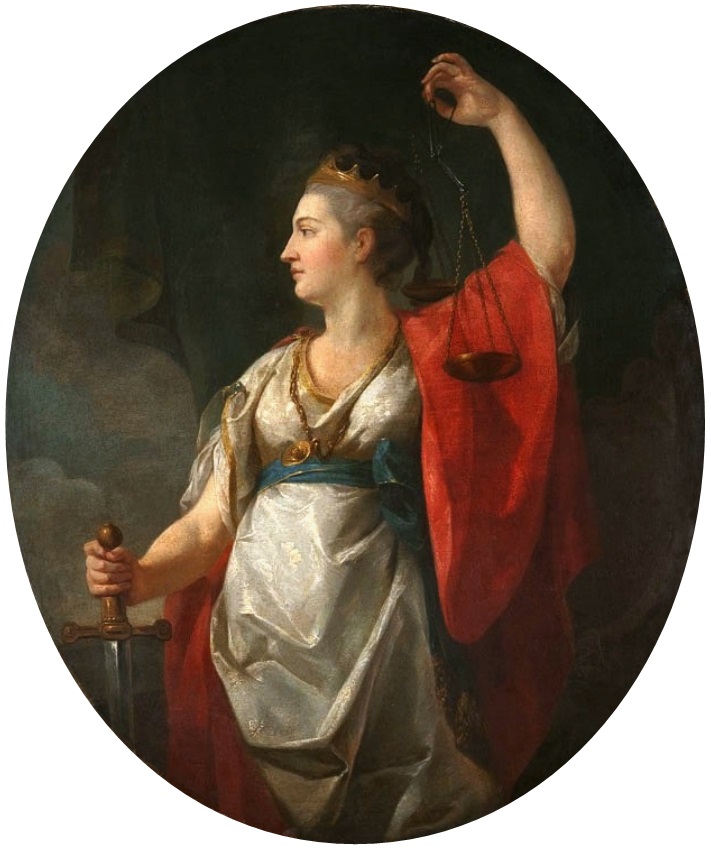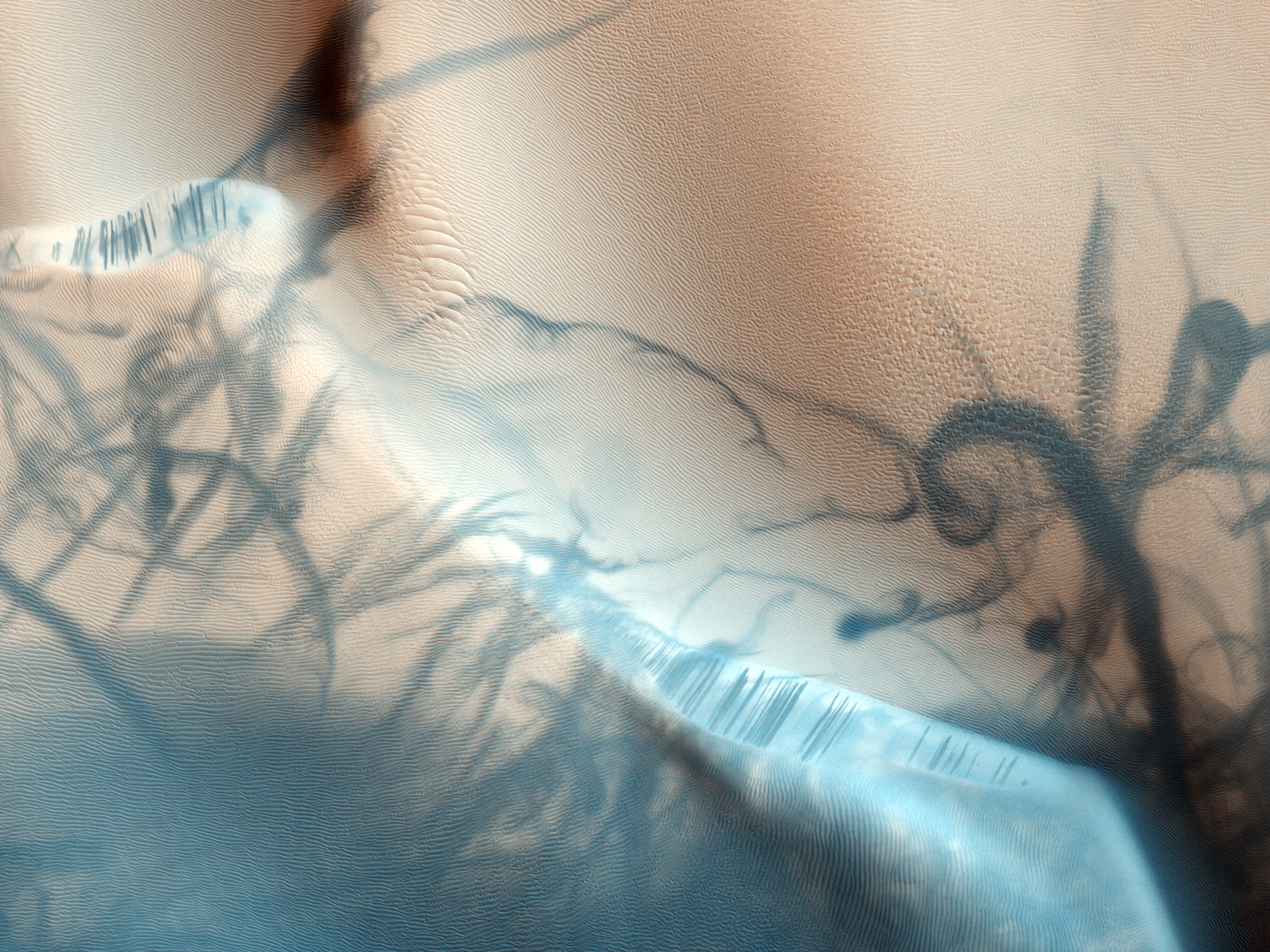|
Noachis Quadrangle
The Noachis quadrangle is one of a series of 30 quadrangle maps of Mars used by the United States Geological Survey (USGS) Astrogeology Research Program. The Noachis quadrangle is also referred to as MC-27 (Mars Chart-27). The Noachis quadrangle covers the area from 300° to 360° west longitude and 30° to 65° south latitude on Mars. It lies between the two giant impact basins on Mars: Argyre and Hellas. The Noachis quadrangle includes Noachis Terra and the western part of Hellas Planitia. Noachis is so densely covered with impact craters that it is considered among the oldest landforms on Mars—hence the term "Noachian" for one of the earliest time periods in martian history. In addition, many previously buried craters are now coming to the surface, where Noachis' extreme age has allowed ancient craters to be filled, and once again newly exposed. Much of the surface in Noachis quadrangle shows a scalloped topography where the disappearance of ground ice has left depressi ... [...More Info...] [...Related Items...] OR: [Wikipedia] [Google] [Baidu] |
Mars Exploration Rover
NASA's Mars Exploration Rover (MER) mission was a robotic space mission involving two Mars rovers, '' Spirit'' and '' Opportunity'', exploring the planet Mars. It began in 2003 with the launch of the two rovers to explore the Martian surface and geology; both landed on Mars at separate locations in January 2004. Both rovers far outlived their planned missions of 90 Martian solar days: MER-A ''Spirit'' was active until March 22, 2010, while MER-B ''Opportunity'' was active until June 10, 2018. Objectives The mission's scientific objective was to search for and characterize a wide range of rocks and soils that hold clues to past water activity on Mars. The mission is part of NASA's Mars Exploration Program, which includes three previous successful landers: the two Viking program landers in 1976 and Mars Pathfinder probe in 1997. The total cost of building, launching, landing and operating the rovers on the surface for the initial 90-sol primary mission was US$820 mill ... [...More Info...] [...Related Items...] OR: [Wikipedia] [Google] [Baidu] |
MOC Public Targeting Program
The MOC Public Targeting Program was a very popular program that followed the Mars Global Surveyor's pictures of Mars. A total of 4,636 requests came in from the general public. Of these, 1,086 were photographed by the Mars Observer Camera. Many of the requests eventually resulted in publications. A little more than half of the requests came from a single member of the general public. One of the people wrote in the Planetary Report that working with MGS was as exciting as being a football fan able to run a few plays in the Super Bowl.Secosky. J. 2007. "Public involvement." The Planetary Report: 27.19 Images from the Public Target program can be found at http://www.msss.com/moc_gallery/ Examples of pictures taken through Public Target program Image:Layers in a crater in Arabia.JPG, Pedestal craters and layers in Tikonravev Crater in Arabia, as seen by Mars Global Surveyor (MGS) with the Mars Orbiter Camera, under the MOC Public Targeting Program. Layers may form from vo ... [...More Info...] [...Related Items...] OR: [Wikipedia] [Google] [Baidu] |
Mars Global Surveyor
''Mars Global Surveyor'' (MGS) was an American robotic space probe developed by NASA's Jet Propulsion Laboratory and launched November 1996. MGS was a global mapping mission that examined the entire planet, from the ionosphere down through the atmosphere to the surface. As part of the larger Mars Exploration Program, Mars Global Surveyor performed atmospheric monitoring for sister orbiters during aerobraking, and helped Mars rovers and lander missions by identifying potential landing sites and relaying surface telemetry. It completed its primary mission in January 2001 and was in its third extended mission phase when, on 2 November 2006, the spacecraft failed to respond to messages and commands. A faint signal was detected three days later which indicated that it had gone into safe mode. Attempts to recontact the spacecraft and resolve the problem failed, and NASA officially ended the mission in January 2007. MGS remains in a stable near-polar circular orbit at about 450 ... [...More Info...] [...Related Items...] OR: [Wikipedia] [Google] [Baidu] |
Rabe Crater
Rabe is a crater on the planet Mars Mars is the fourth planet from the Sun and the second-smallest planet in the Solar System, only being larger than Mercury (planet), Mercury. In the English language, Mars is named for the Mars (mythology), Roman god of war. Mars is a terr ..., located in the Noachis quadrangle at 43.9° south latitude 34.9° east longitude. It measures approximately 108 kilometers in diameter. Its name was approved in 1973, and refers to Wilhelm F. Rabe, a German astronomer (1893–1958). There is a huge field of dunes in the center of Rabe. Gallery Maprabecrater.jpg, Map showing location of Rabe crater on the bottom right Image:Rabe Crater Floor.JPG, Rabe crater floor, as seen by HiRISE Image:Rabe Crater.jpg, This image shows part of the floor of Rabe crater Rabe Crater perspective ESA310887.jpg, Perspective view of Rabe crater seen from the ESA's Mars Express See also * List of craters on Mars: O-Z References {{Portal bar, Solar Sys ... [...More Info...] [...Related Items...] OR: [Wikipedia] [Google] [Baidu] |
THEMIS
In Greek mythology and religion, Themis (; grc, Θέμις, Themis, justice, law, custom) is one of the twelve Titan children of Gaia and Uranus, and the second wife of Zeus. She is the goddess and personification of justice, divine order, fairness, law, and custom, and her symbols include the Scales of Justice. She is also associated with oracles and prophecies, including the Oracle of Delphi. Name ''Themis'' means "divine law" rather than human ordinance, literally "that which is put in place", from the Greek verb ''títhēmi'' ( τίθημι), meaning "to put." To the ancient Greeks she was originally the organizer of the "communal affairs of humans, particularly assemblies." Moses Finley remarked of ''themis'', as the word was used by Homer in the 8th century BCE, to evoke the social order of the 10th- and 9th-century Greek Dark Ages: Finley adds, "There was ''themis''—custom, tradition, folk-ways, ''mores'', whatever we may call it, the enormous power of 'it is ( ... [...More Info...] [...Related Items...] OR: [Wikipedia] [Google] [Baidu] |
Kaiser Crater
''Kaiser'' is the German word for "emperor" (female Kaiserin). In general, the German title in principle applies to rulers anywhere in the world above the rank of king (''König''). In English, the (untranslated) word ''Kaiser'' is mainly applied to the emperors of the unified German Empire (1871–1918) and the emperors of the Austrian Empire (1804–1918). During the First World War, anti-German sentiment was at its zenith; the term ''Kaiser''—especially as applied to Wilhelm II, German Emperor—thus gained considerable negative connotations in English-speaking countries. Especially in Central Europe, between northern Italy and southern Poland, between western Austria and western Ukraine and in Bavaria, Emperor Franz Joseph I is still associated with "Der Kaiser (the emperor)" today. As a result of his long reign from 1848 to 1916 and the associated Golden Age before the First World War, this title often has still a very high historical respect in this geographical ar ... [...More Info...] [...Related Items...] OR: [Wikipedia] [Google] [Baidu] |
Asimov Crater
Asimov Crater is an impact crater in the Noachis quadrangle of Mars, located at 47.0° S and 355.05° W. It is in diameter and was named after Isaac Asimov (1920–1992), an American biochemist and writer. The name was officially adopted on May 4, 2009. USGS-Mars-MC-27-NoachisRegion-mola.png, Topographical map showing location of Asimov Crater and other nearby craters Wikiasimov.jpg, Western side of Asimov crater, as seen by CTX camera on Mars Reconnaissance Orbiter. Wikiasimovlayers.jpg, Layers and gullies in Asimov crater, as seen by CTX camera on Mars Reconnaissance Orbiter. Note: this is an enlargement of the previous image. Image:Close-up of Asimov Crater.JPG, Gullies on mound in Asimov Crater, as seen by HiRISE. Image:Asimov Crater Layers.jpg, Layers in west slope of Asimov Crater, as seen by HiRISE. Image:Asimov Layers Close-up.JPG, Close-up of layers in west slope of Asimov Crater. Shadows show the overhang. Some of the layers are much more resistant to erosion, ... [...More Info...] [...Related Items...] OR: [Wikipedia] [Google] [Baidu] |
Maunder Crater
Maunder may refer to: * Maunder (lunar crater) * Maunder (Martian crater) * Maunder (surname) Maunder is a surname. Notable people with the surname include: *Alexander Maunder (1861–1932), British sport shooter * Annie Scott Dill Maunder (1868–1947), Irish astronomer and mathematician * Edward Walter Maunder (1851–1928), English astro ... * Maunder Minimum, a period in the 17th–18th centuries when sunspots became exceedingly rare {{disambiguation ... [...More Info...] [...Related Items...] OR: [Wikipedia] [Google] [Baidu] |
Frento Vallis
Frento Vallis is a valley in the Noachis quadrangle of Mars, with a location centered at 50.3 S and 14.5 W. It is 277 km long and was named after the classical name for a river in Italy. References See also * Geology of Mars * HiRISE * Vallis (planetary geology) * Water on Mars Almost all water on Mars today exists as ice, though it also exists in small quantities as vapor in the atmosphere. What was thought to be low-volume liquid brines in shallow Martian soil, also called recurrent slope lineae, may be grains of ... Valleys and canyons on Mars Noachis quadrangle {{Mars-stub ... [...More Info...] [...Related Items...] OR: [Wikipedia] [Google] [Baidu] |
Russell (Martian Crater)
Russell is a crater on Mars, located in the Noachis quadrangle at 54.9° south latitude and 347.6° west longitude. It measures approximately 135 kilometers in diameter and was named after American astronomer Henry Norris Russell (1877–1957). Description Debris flows have been observed on some of the dunes in this crater. Some researchers believe that they may be caused by liquid water. Liquid water could be stable for short periods of time in the summer in the southern hemisphere of Mars. These gully-like debris flows may be due to small amounts of ice melting. Another idea is that chunks of dry ice form on the dunes during the cold winter, then slide down in the spring when it is warmer. Experiments have demonstrated that carbon dioxide from the thawing dry ice forms a lubricating layer under pieces of dry ice, making it easy for the process to take place. Image:Noachis Map.JPG, Quadrangle map of Noachis labeled with major features. Russell Crater is near the bottom left ... [...More Info...] [...Related Items...] OR: [Wikipedia] [Google] [Baidu] |
HiRISE
High Resolution Imaging Science Experiment is a camera on board the ''Mars Reconnaissance Orbiter'' which has been orbiting and studying Mars since 2006. The 65 kg (143 lb), US$40 million instrument was built under the direction of the University of Arizona's Lunar and Planetary Laboratory by Ball Aerospace & Technologies Corp. It consists of a 0.5m (19.7 in) aperture reflecting telescope, the largest so far of any deep space mission, which allows it to take pictures of Mars with resolutions of 0.3m/pixel (1ft/pixel), resolving objects below a meter across. HiRISE has imaged Mars exploration rovers on the surface, including the ''Opportunity'' rover and the ongoing ''Curiosity'' mission. History In the late 1980s, of Ball Aerospace & Technologies began planning the kind of high-resolution imaging needed to support sample return and surface exploration of Mars. In early 2001 he teamed up with Alfred McEwen of the University of Arizona to propose such ... [...More Info...] [...Related Items...] OR: [Wikipedia] [Google] [Baidu] |





